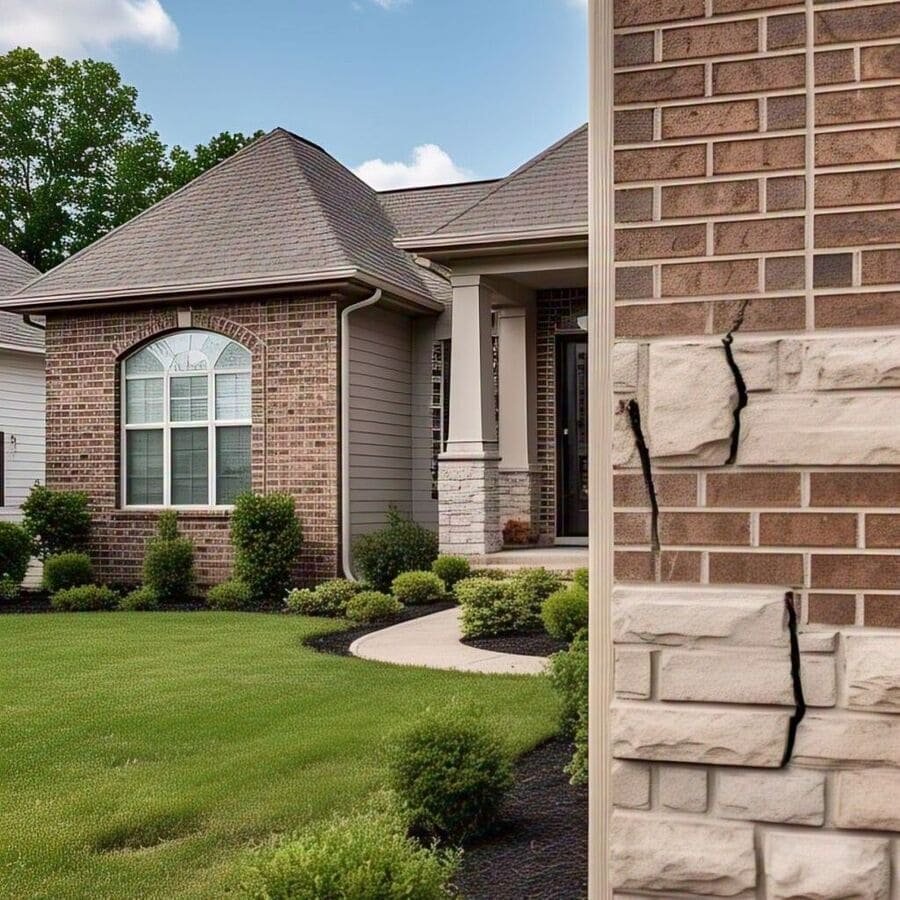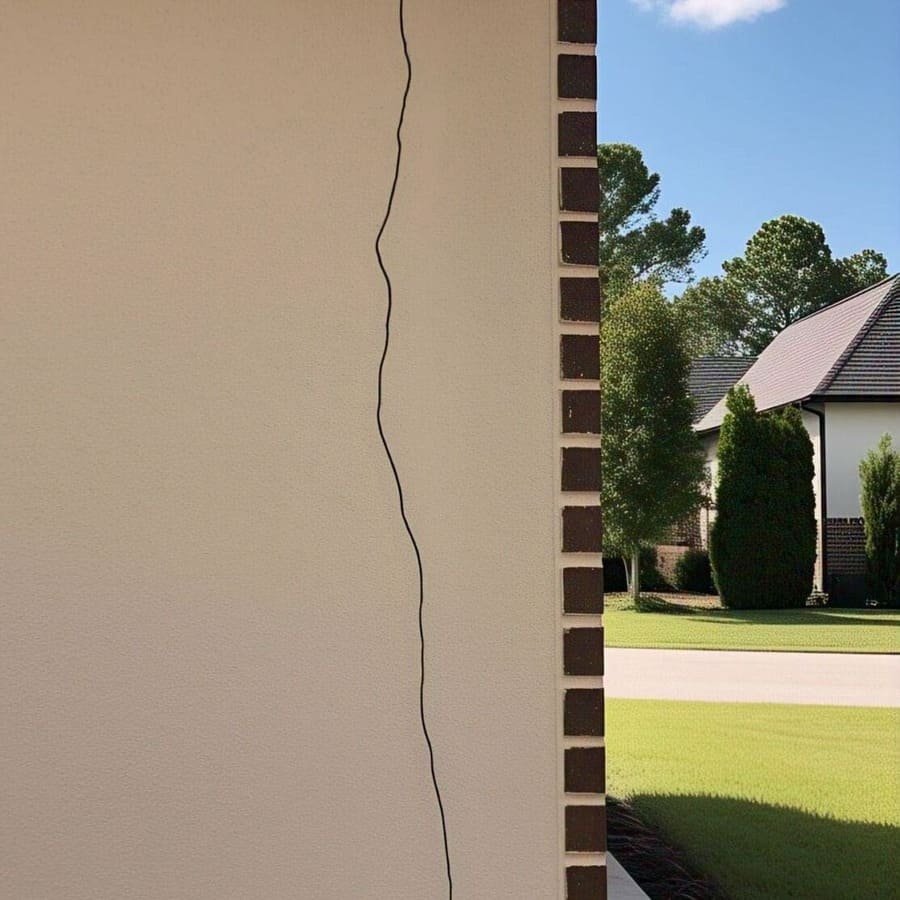In Billings, MT, the weather can be unpredictable. One day, it’s sunny and warm; the next, it’s snowing or raining. While you’re cozy inside, your home is battling the elements. And guess what? So is your foundation.
The foundation is the backbone of your home. When the weather takes a turn, your foundation feels it. It expands, contracts, shifts, and cracks. Let’s take a deeper look at how the weather affects your foundation here in Billings, and how you can protect your home from these unpredictable changes.
Before you read further, always remember, you can always call us if you are ever in doubt about your foundation and our foundation repair specialist will provide you the right suggestion.

Billings Weather: A Quick Overview
Billings is known for its extreme temperature swings. With hot summers, freezing winters, and plenty of rain and snow in between, your home’s foundation faces a lot of stress.
Here’s a snapshot of Billings’ weather patterns:
- Summer: Temperatures can soar above 90°F. Long dry spells can cause the soil around your foundation to shrink.
- Winter: Winters can bring cold temperatures, with average lows dipping to around 20°F. Snow and ice can accumulate, putting additional stress on your foundation.
- Spring and Fall: These seasons see more rainfall, leading to soil saturation around your foundation.
So, how does this rollercoaster of weather affect your foundation? Let’s break it down.
1. Expanding and Contracting Soil
The soil around your foundation changes based on weather conditions. When it’s hot and dry, the soil shrinks. When it rains or snows, the soil expands as it absorbs moisture.
Why it matters:
- Soil Shrinkage in Summer: During long dry spells in the summer, the soil around your foundation can shrink. This may cause the foundation to settle unevenly, leading to cracks and gaps in the walls or floors. The ground beneath your home literally pulls away.
- Soil Expansion in Winter: After the snow melts in the spring, the soil swells up as it absorbs the water. This expansion can put pressure on the foundation, pushing it upward or causing it to shift.
What can happen:
- Cracks in walls, floors, and ceilings
- Uneven floors or sloping surfaces
- Doors and windows that stick or don’t close properly
The good news? Regular moisture management around your foundation can minimize this issue. Keeping the soil around your foundation moist but not soaked helps reduce extreme soil shrinkage and expansion.
2. Freeze-Thaw Cycles in Winter
Winter in Billings can be brutal. Freezing temperatures and heavy snow mean your home’s foundation is constantly under attack. A dangerous thing happens when snow melts and then refreezes.
Why it matters: When snow melts, it seeps into the soil around your foundation. If the temperature drops again, that water turns into ice. The soil expands when it freezes, putting immense pressure on your foundation walls and the concrete slab beneath your home.
What can happen:
- Cracks in the foundation: Ice expansion can cause concrete to crack over time.
- Shifting foundation: Constant freeze-thaw cycles can push and pull at the foundation, leading to shifting and settling.
- Water seepage: If cracks form, water can get into your home, leading to dampness, mold, and structural issues.
Tip for homeowners in Billings: Keep the gutters clean and direct water away from your foundation. You can also install sump pumps or French drains to manage the excess water.
3. Heavy Rain and Flooding
Billings isn’t known for being flooded often, but heavy rain can still have an impact. Spring and early summer are especially prone to sudden thunderstorms that dump large amounts of rain quickly. This can saturate the ground and lead to water pooling around your foundation.
Why it matters: Excessive moisture around your foundation can cause the soil to expand, placing pressure on the walls and floors of your home. If your home’s foundation is already compromised, the additional moisture can make things worse.
What can happen:
- Water infiltration: Water seeping into the basement or crawl space can cause flooding and water damage.
- Erosion: If water pools next to your foundation, it can erode the soil, making the foundation unstable and leading to shifting.
- Cracks: Prolonged moisture around the foundation can cause cracks and weaken the overall structure.
The good news? If you have proper drainage systems—like gutters, downspouts, and a well-maintained landscape—you can protect your foundation from water damage.
4. Dry Conditions and Drought
While Billings gets its fair share of rainfall, summer months can be very dry. Hot temperatures and long dry spells can dry out the soil around your home’s foundation, causing it to shrink.
Why it matters: When the soil shrinks during drought, your foundation might settle unevenly. This can lead to cracks and shifts in the structure of your home. In extreme cases, the soil might shrink so much that the foundation could begin to sink.
What can happen:
- Cracked foundation: Dry soil can cause gaps and cracks in your foundation, making your home vulnerable to further damage.
- Sinking foundation: Prolonged shrinkage can cause sections of your home’s foundation to sink, leading to uneven floors or walls.
- Structural damage: As the foundation settles or shifts, you might notice doors and windows becoming misaligned.
Tip for homeowners in Billings: Use a soaker hose or sprinkler system to keep the soil around your foundation consistently moist. This can help prevent excessive shrinkage.
5. Wind and Soil Erosion
Billings is known for its windy days, especially in spring and fall. Wind can cause soil erosion around your foundation, especially if the area around your home has poor landscaping.
Why it matters: When wind blows across the ground, it can loosen soil, making it more susceptible to washing away. This could leave gaps around the foundation, and over time, the shifting ground can cause the foundation to settle or crack.
What can happen:
- Erosion near the foundation: Erosion can remove soil from around your foundation, leading to settlement.
- Structural issues: Once the soil is loosened, the foundation may no longer be supported evenly, causing cracks, leaks, and shifts in the structure.
The good news? Protecting your home from soil erosion is as simple as adding proper landscaping, such as planting grass or using ground cover to keep the soil intact.
How to Protect Your Foundation from Weather Damage
Now that we’ve looked at how weather affects your foundation, you might be wondering: What can I do to protect my home?
Here are a few tips to keep your foundation strong and secure, no matter the weather:
- Maintain Proper Drainage: Ensure that water flows away from your foundation. Install downspouts, gutters, and French drains to prevent water from pooling around your home.
- Seal Cracks: Small cracks in your foundation can allow moisture to get in, leading to bigger problems. Seal them early before they get worse.
- Use Moisture Barriers: In your crawl space or basement, consider adding vapor barriers or waterproofing systems to keep moisture levels stable.
- Keep the Soil Moist: In summer, when the ground is dry, use soaker hoses or sprinklers around your foundation to keep the soil from shrinking.
- Fix Sinking Soil: If you notice that the soil around your foundation has eroded or settled, contact a professional to address the issue before it affects your foundation.
Conclusion
In Billings, MT, the weather can throw a lot at your home, from extreme heat to freezing temperatures and heavy snow. Your foundation is constantly under stress, expanding, contracting, and shifting with the seasons.
But here’s the good news: with a little care and attention, you can protect your foundation from weather-related damage. Monitor your home, keep up with regular maintenance, and don’t ignore small signs of trouble. With the right preventative steps, you can keep your foundation strong and your home safe.
Weather can be unpredictable, but your foundation doesn’t have to be. Stay proactive, and your home will weather the storms for years to come.


